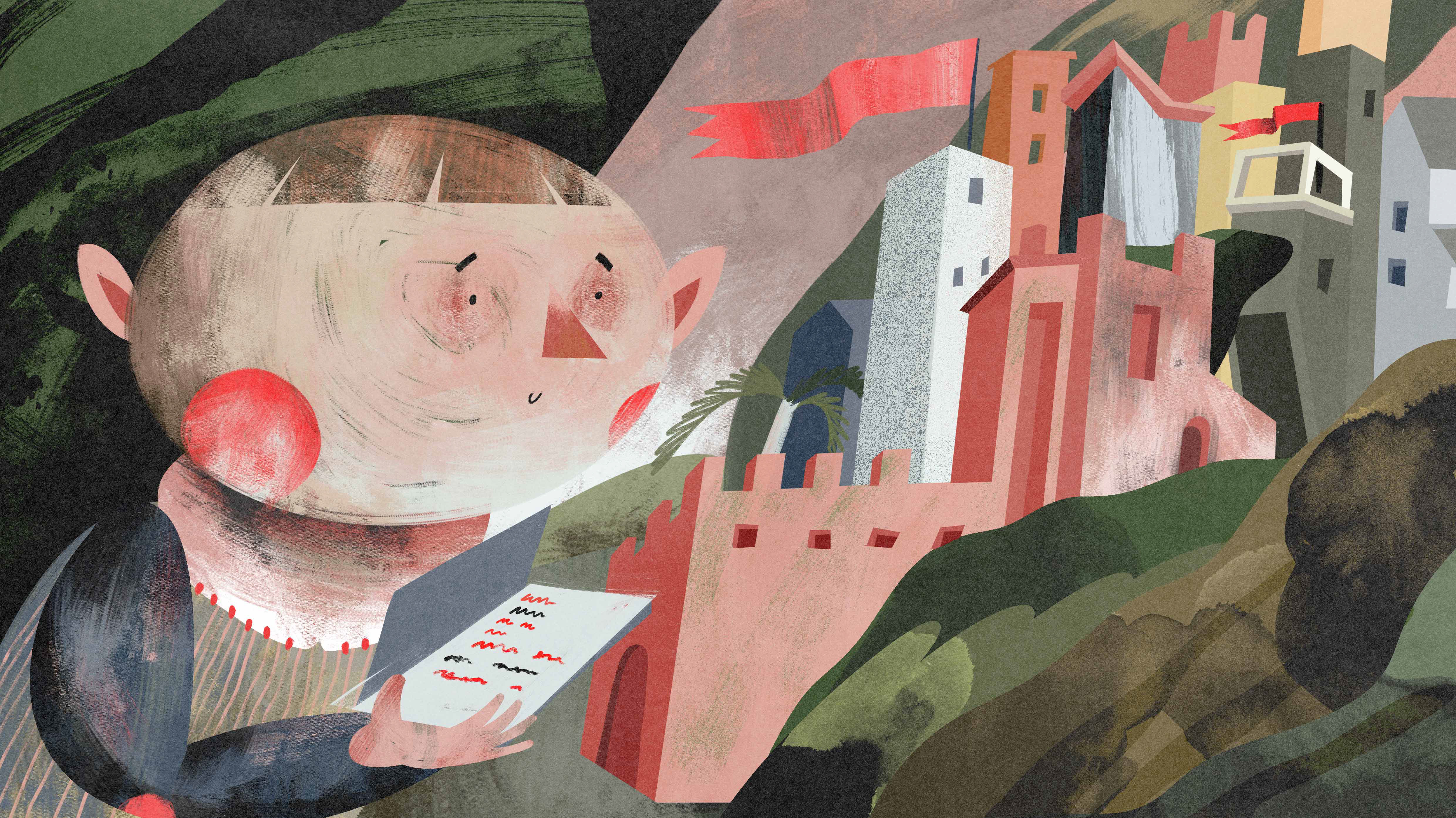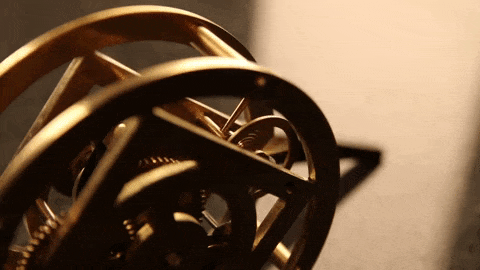
Memento vitae
Most of us are no longer able to exist outside of schedules, outside of time and cultural norms. We work to save time. We hurry. We do our best to optimize everything for maximum efficiency. Yet somehow, in the world where nearly everything can be digitized and replaced with apps, we see a steady rise of physical analogue technology, such as vinyl records, film photography and mechanical watches.
"Memento vitae" explores our relationship with these physical emotional artifacts and suggests that such products have been an inseparable part of deep cognitive work and concentration for centuries. Used by monks and sages, various religiously significant and personal items have always been by the side and were effective at providing an important point of focus, as well as physical interaction.
Project aims to bring these artifacts back into our modern life. No longer attached to any religions, these products speak of something universal, yet rarely truly noticeable - time.
People in the modern world spend their days doing sedentary, cognitive tasks and the only physical object they tend to touch is the keyboard on their laptop. At the same time we notice problems like depression, anxiety, isolation and loneliness rapidly increasing.
In previous centuries intensive cognitive work and deep concentration was associated mostly with monks and sages, who knew that thinking happens not only in the brain, but depends on the entire body and sensory system.
Objects are build for observing time and taking control of our own attention. Time in modern societies universally causes the most anxiety and is an important topic, yet is difficult to express. Timers are wound in small gracious movements and contain design choreography within. Materials used are very durable and as they are being used, the colours and surfaces slowly change, based on every touch from the user. All products are fully mechanical and thus do not rely on electricity. They will continue working for many years and if anything gets worn out, they are easy to repair.
Similarly and at the same time differently to ancient monks and sages, who often used „memento mori“ objects in their contemplations and meditations, this project calls „memento vitae“ – to take breaks, which bring us back to the present, to the physical reality. To remember that we are alive.
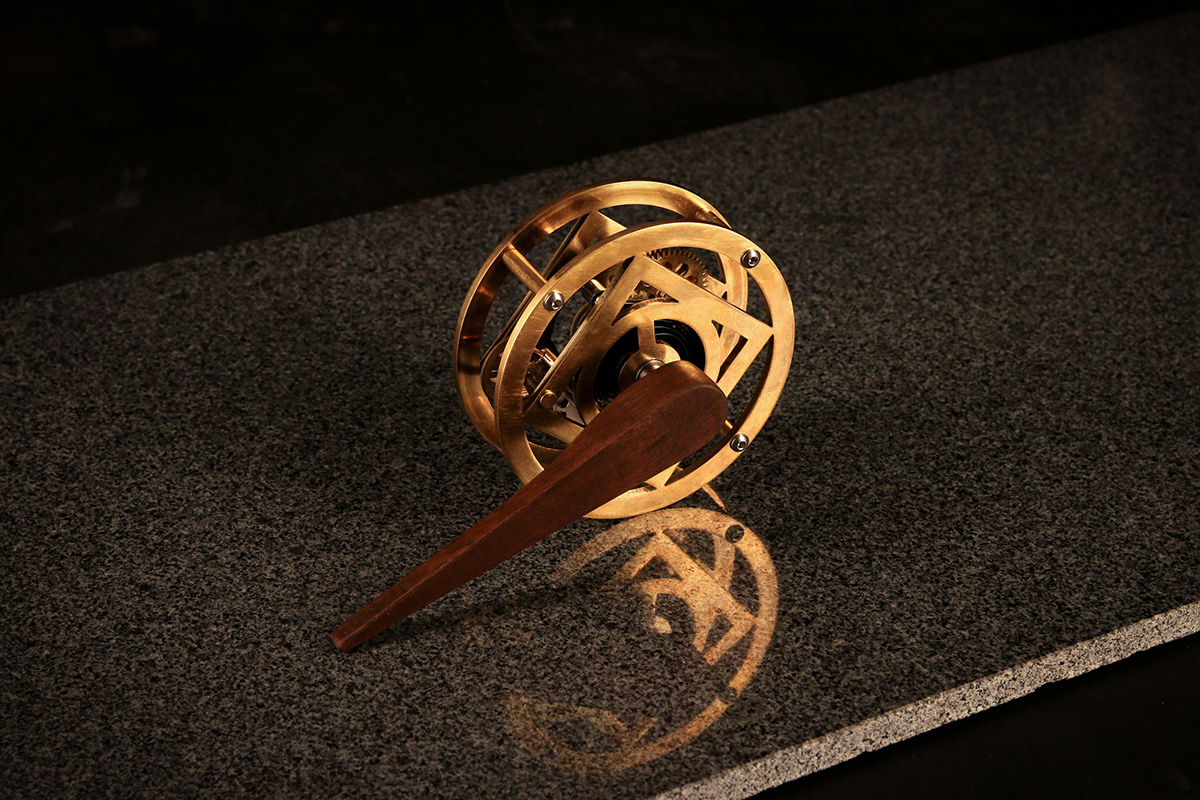
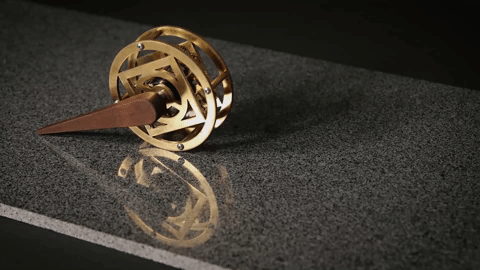
Timer no. 1. slowly rolls on the surface in a straight line over a couple of hours. Expression of linear movement is an allusion to the western school of thought. Time is monochronic, jobs are completed one at a time and everyday life is carefully arranged and scheduled. Timer becomes a physical point of focus, while the captivating movement of the mechanism, fully exposed, keeps the mind from wandering. Linear movement creates a sense of time spent and time remaining, without causing any additional stress.
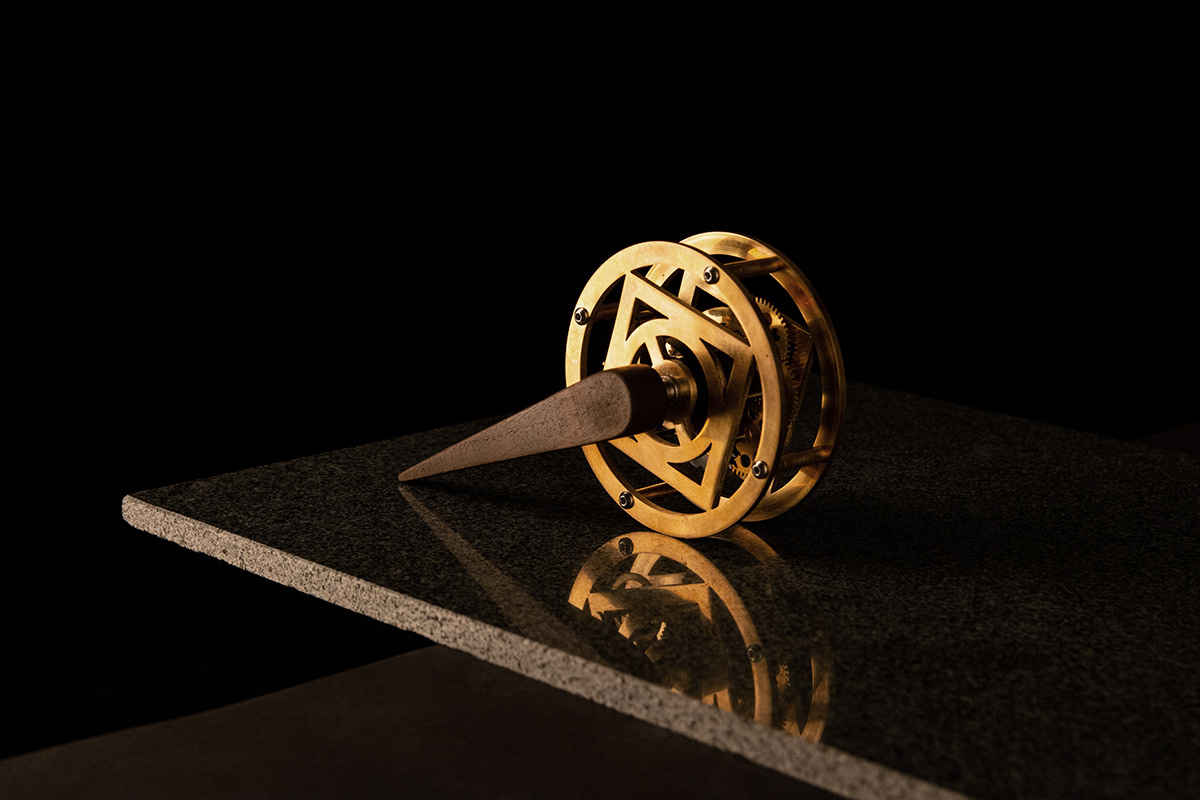

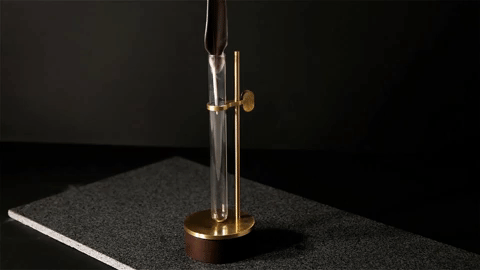
A small vase for a flower, which is slowly dying from the moment it was picked up is an allusion to memento mori artifacts that were so common in the past. Once wound, the mechanism rotates once per hour and reminds us of our mortality, but more importantly of life, of reality, of actions we can still take and words still to say. The object in the glass, be it flower or something else, is exposed and appreciated to such a degree that it becomes an important, emotion-induced element of self reflection.

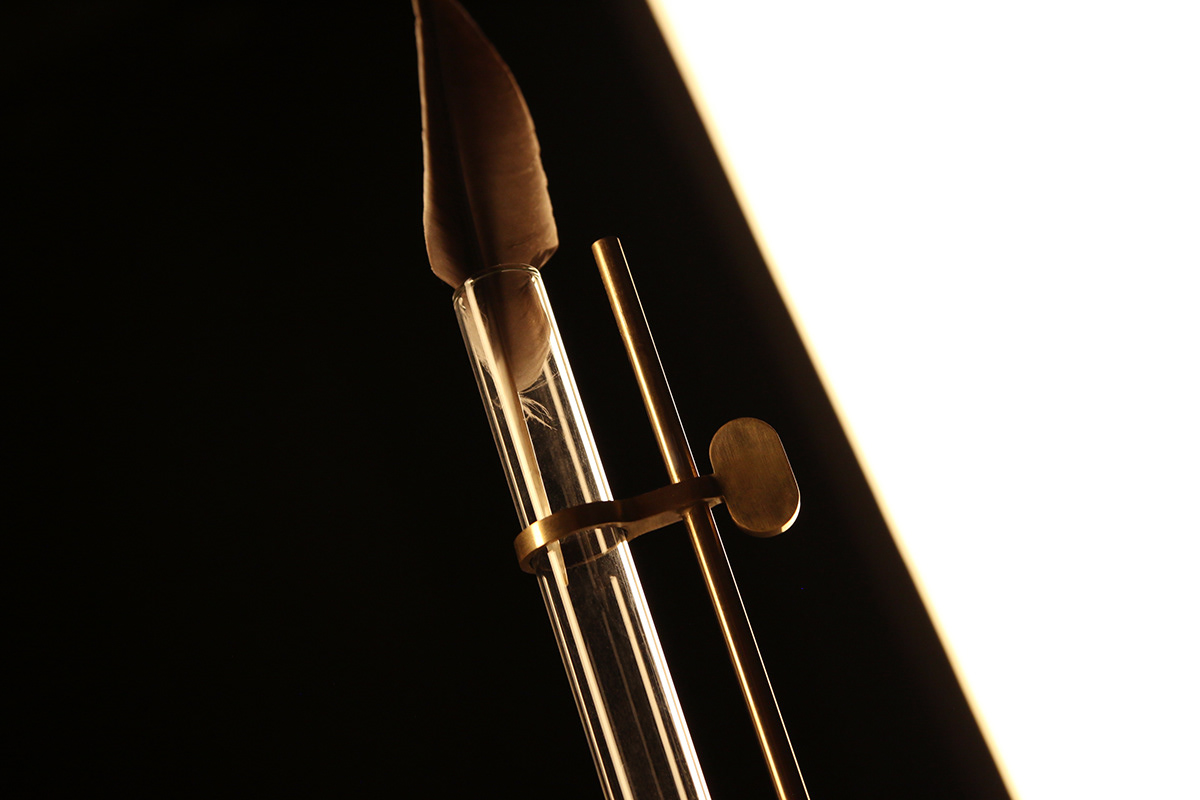


Human mind developed, based on the senses we felt, and the situations we encountered. What we are and how we think still depends on the body we have and the movements we take. Object built around design choreography, rather than visual aesthetics, speaks to this deeper level of thought and affects how we encounter the passing of time and the value we place on it. Every time this artifact is touched, a slight mark on the brass surface is left, a personal story recorded over time. No two will look the same.
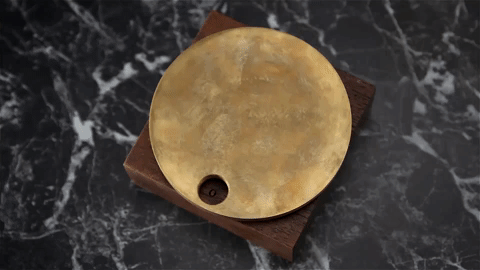
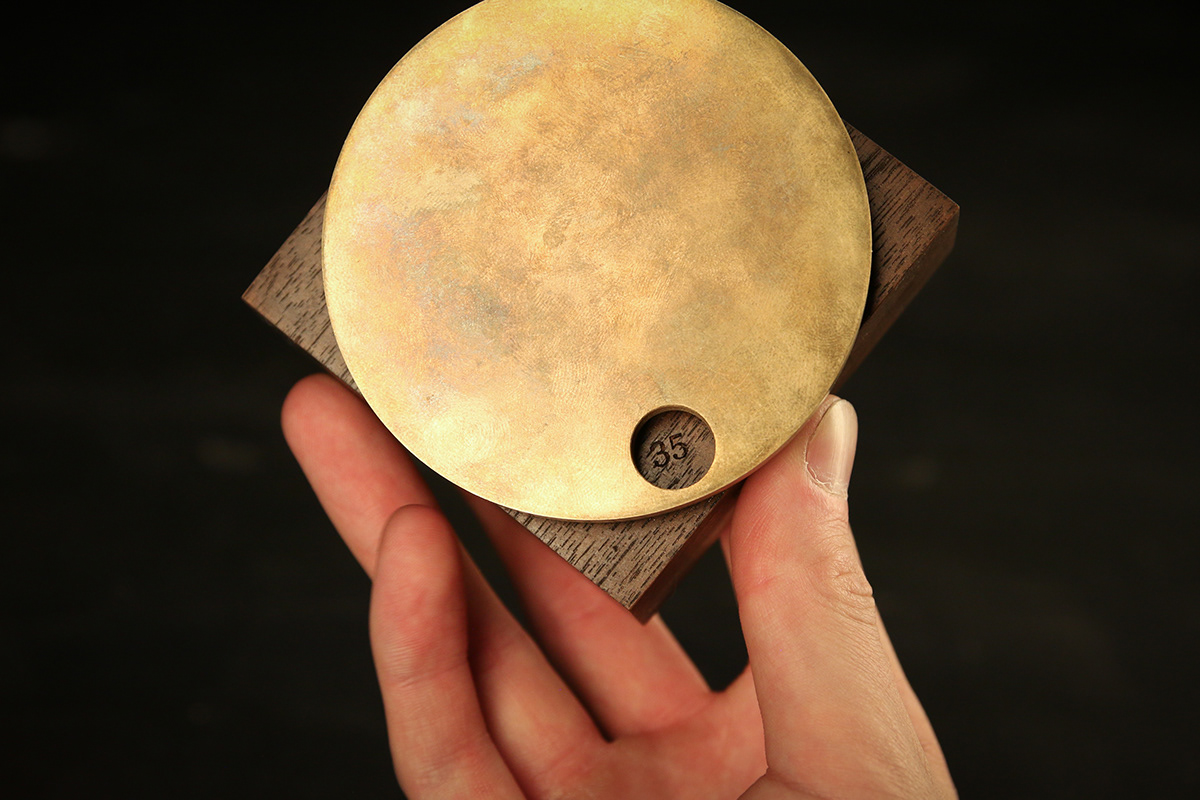
“In his youth Albert Einstein spent a year loafing aimlessly. You don't get anywhere by not 'wasting' time- something, unfortunately, that the parents of teenagers tend frequently to forget.”
― Carlo Rovelli, Seven Brief Lessons on Physics
― Carlo Rovelli, Seven Brief Lessons on Physics
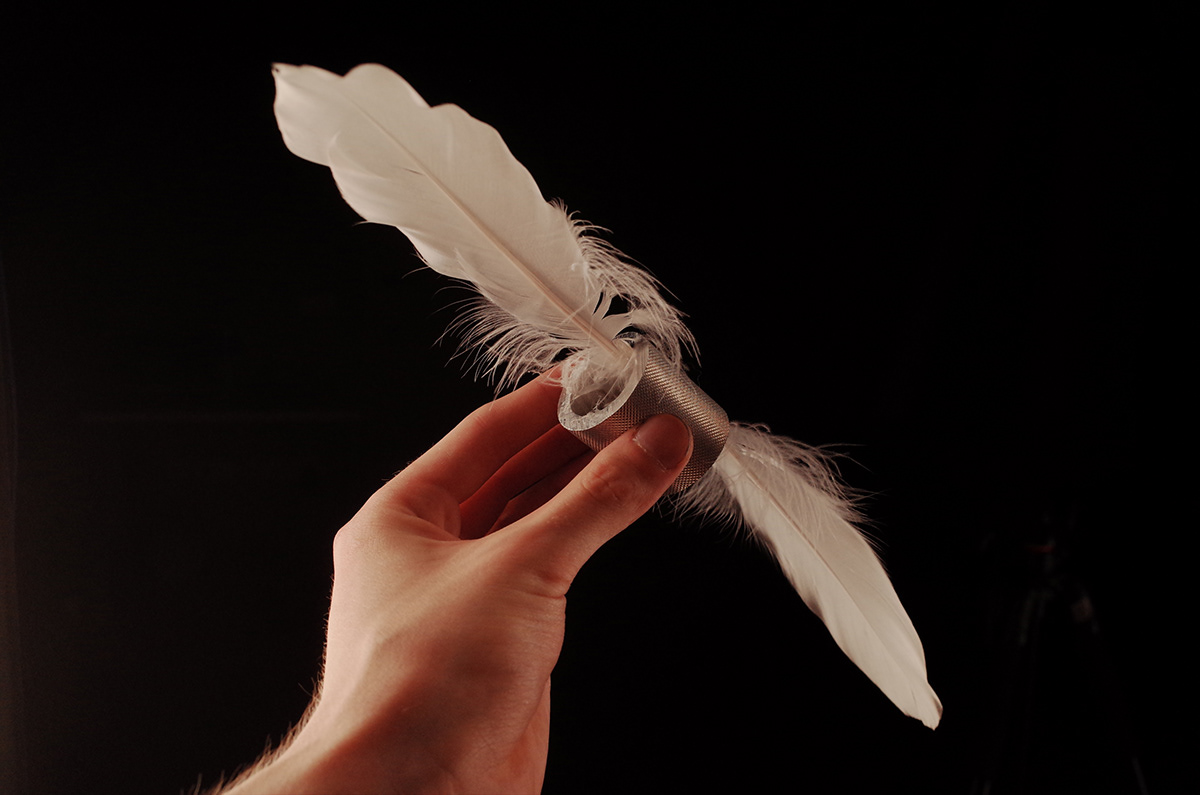
We live among objects every waking hour and what we choose to surround ourselves with, is what we eventually become. The clothes we wear, the accessories we choose, the interiors of our houses, reflect who we are, but just like that, we reflect these choices back with our actions and mindset.
Choose wisely, and remember, Memento vitae.
This project was awarded as the best design research in a national competinion and consists of texts, videos and physical experimentation, based on aleatoric design technique. Feel free to contact to learn more.
